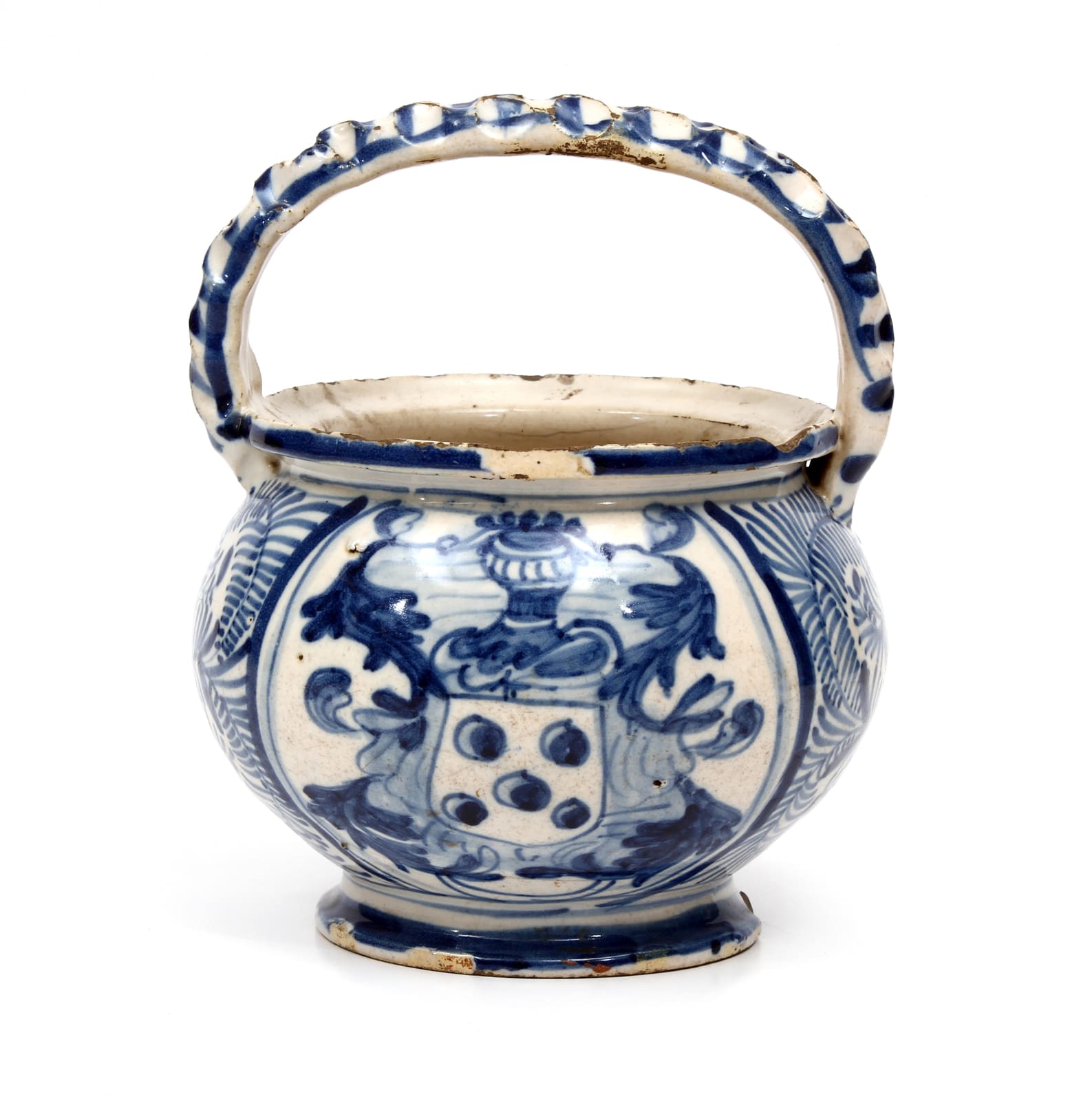Caldeirinha de Água Benta, Armas da Família Ângulo da Escócia , Lisboa, 1630–1640
faiança portuguesa
22 x 18 x 18 cm
C511
Further images
Exposições
"Un Siècle en Blanc et Blue", G. Mendes, Paris, 2016, (cat. pp. 80-81)Publicações
ROQUE, Mário, Lisboa na Origem da Chinoiserie, Lisboa, São Roque, 2018 (pp. 126-127)Receba as novidades!
* campos obrigatórios
Processaremos os seus dados pessoais que forneceu de acordo com nossa política de privacidade (disponível mediante solicitação). Pode cancelar a sua assinatura ou alterar as suas preferências a qualquer momento clicando no link nos nossos emails.





